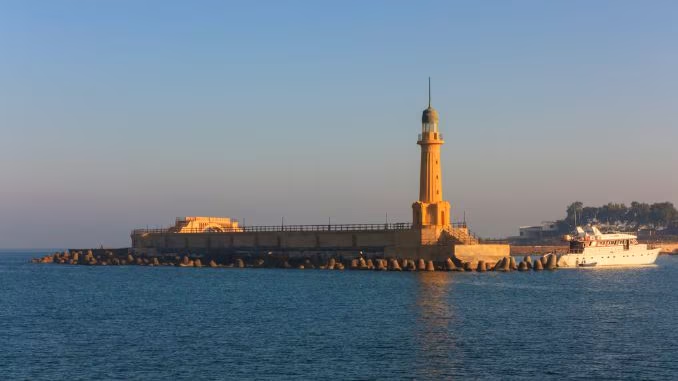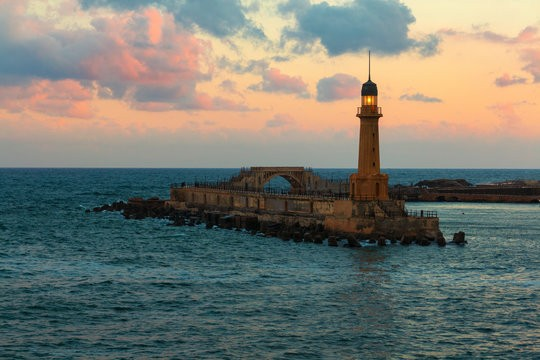In the ancient world, towering monuments weren’t just feats of engineering they were declarations of power, pride, and permanence. Few structures embodied that more than the Lighthouse of Alexandria, one of the original Seven Wonders of the Ancient World. Rising nearly 400 feet above the island of Pharos in Egypt around 280 BC, it wasn’t just a guiding light for sailors it was a beacon of innovation and silent rebellion.
At the heart of this story is Sostratus of Cnidus, the brilliant mind who designed the lighthouse and found a creative way to etch his name into history literally.

More Than Just a Lighthouse
In its time, the Lighthouse of Alexandria was an architectural and technological marvel. Built to guide ships safely into the bustling harbor of Alexandria, it served a critical role in expanding Egypt’s influence over Mediterranean trade.
Day and night, the lighthouse stood as a dependable presence. By day, mirrors reflected sunlight far across the water. By night, a large fire blazed at its summit, offering direction to seafarers navigating the coastline. For centuries, it protected cargo, lives, and commerce earning its reputation as one of the greatest achievements of the Hellenistic era.

Its construction marked Alexandria’s rise as a global trade hub, bringing merchants, scholars, and travelers to its shores. But beyond its practical purpose, the lighthouse was also a political symbol a representation of the Ptolemaic dynasty’s wealth and dominance.
Video:
The Lighthouse of Alexandria: One of the Ancient World’s Most Impressive Buildings
The Man Behind the Marvel
Sostratus, the architect and engineer responsible for the lighthouse, knew he was building something monumental. But while he put his genius into the structure, his name was not allowed to grace it. Instead, Ptolemy II Philadelphus, the ruler of Egypt at the time, insisted that the inscription credit him alone as was customary for rulers commissioning public works.
But Sostratus had other plans.
Unwilling to let his contribution fade into obscurity, he made a bold and clever move. He inscribed his name into the base of the lighthouse then covered it with plaster. On top of this layer, he engraved a new inscription honoring Ptolemy II. The deception was silent, respectful, and genius.
Over time, the outer plaster wore away under the relentless coastal weather. And when it did, Sostratus’s name reemerged, outlasting the dynasty that tried to claim his work.

A Message Through Time
This quiet rebellion became one of history’s most poetic footnotes. Sostratus didn’t shout for credit; he trusted that time would do the work for him. And it did. Centuries later, historians and scholars recognized his hidden message, acknowledging him as the true mind behind the lighthouse.
In a world where many great inventors and thinkers were lost to anonymity, Sostratus found a way to leave his mark literally carved in stone. It wasn’t just about ego; it was about legacy. He believed the architect should be remembered, not just the ruler who funded the project.
Video:
Alexandria: The Cultural Heart of Ancient Egypt, One of the Seven Wonders
A Structure That Stood for Centuries
The Lighthouse of Alexandria stood for over 1,000 years, surviving numerous earthquakes and natural disasters before finally collapsing in the 14th century. Even in ruins, it inspired architects for generations and laid the groundwork for the modern lighthouse.
Its influence can still be seen today, both in design and in concept. The word “Pharos,” the name of the island on which it was built, has even become the root of the word for “lighthouse” in several modern languages.

A Legacy That Outlived an Empire
Sostratus’s hidden signature teaches us something powerful: true genius doesn’t always need applause in the moment. Sometimes, it just needs time.
The Lighthouse of Alexandria lit up more than a harbor it illuminated the idea that great works should honor those who build them, not just those who pay for them. Thanks to one man’s quiet defiance, we remember not only a Wonder of the World but the brilliant mind who dared to sign it.


